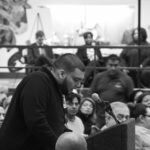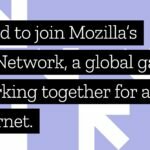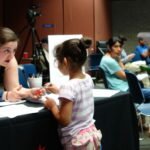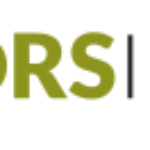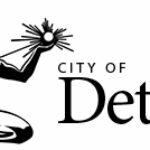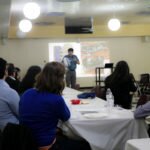At the Experimental Modes convening, practitioners from all over civic tech to came together to discuss, in their own words, how they do what they do. You can see our full meeting notes here. We tore into this subject, looking at how we relate to civic tech explicitly, the general tools we use in our work, and the strategies & tactics we wield.
The case study sprint, a documentation project inspired by booksprints, is one way we’re continuing to capture this information and open the door to people who couldn’t be in the room with us. On site, we also conducted an active listening exercise to bust the language barriers of our professional and personal backgrounds and explore ways to explain our work to new audiences.
As part of this exercise, which you can try for yourself here, we reviewed the 5 Modes of Civic Engagement in Civic Tech, which I created based on my own analysis of these and other practitioners’ work, and dug into the similarities and differences in the strategies we use.
Below is results of our share-out, taken from our meeting notes. Each pair reflected back to the group on what techniques were present in both their projects or what made finding commonalities difficult. Taken together, this forms a picture of the lack of one-size-fits-all in civic tech.
The comments have been slightly edited for formatting and clarity and annotated, when appropriate, with corresponding Modes of Civic Engagement in Civic Tech for further reading. You can read the raw meeting notes of the share-out here.
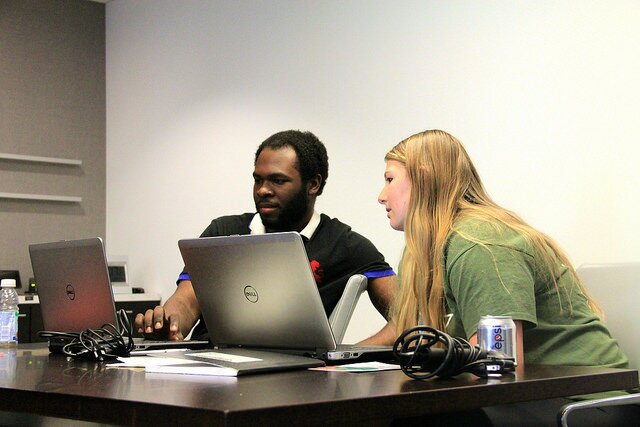
Stef Milovic of the Hidden Valley Nature Lab and Naheem Morris of the Red Hook Digital Stewards program discuss strategy at the Experimental Modes Convening. April 4, 2105. Photo by Daniel X. O’Neil.
Strategy Share-out
Marisa Jahn (of the The NannyVan App) and Tiana Epps-Johnson (of ELECTricity)
- Work in partnership with local organizations & working with local elections
- Offer specific and discrete tools skills to groups that they need first to build trust; then moving the dialogue towards exploring shared space of collaboration
- Get on the road (literally meet people where they are) to listen to your communities stories
Anca Matioc (of AbreLatAm) and Josh Kalov (of Smart Chicago Collaborative)
- Hard to draw commonalities between our work
- One overlap: both work on evolving platforms that enable multiple communities (in Latin America and Cook County, respectively) to communicate with each other
Laura Walker McDonald (of SIMLab) and Geoff Hing (of Chicago Tribune)
- Didn’t have commonalities. Work is done at very different orientations. Geoff’s work as a code writer VS Laura’s work coordinating stakeholders around technology
- Geoff drew images to show the tangle of networks each works in (see below), and they both found the people left out of that tangle tend to be the community (the people you’re serving): they are not necessarily the people who are raising the funds and having to produce “outcomes” or the bottom line
Robert Smith (of Red Hook Digital Stewards) and Sanjay Jolly (of The Prometheus Radio Project)
- Similar approaches: peer-to-peer communication (reaching out to local, trusted leaders in a community that knew others)
- Shared values and vision between our work: the importance of local control and knowledge of technology infrastructure
Jennifer Brandel (of Curious Nation) and Danielle Coates-Connor (of GoBoston2030)
- The projects we’re both doing meaningfully involve reaching out to community stakeholders
- Both collaborate with highly bureaucratic orgs with implicit norms and they (as practitioners) are trying to influence these norms and shift the dominant narrative
- Both use the frame of curiosity and questions as part of our approach to engagement
Demond Drummer (of Large Lots Program) and Maegan Ortiz (of Mobile Voices)
- Both projects are “narrative-aware”— sensitive to how what it means to work with communities in the creation of tech v. working on their behalf
- Focus on not creating new work but leveraging and appropriating existing technology to support existing leaders/work
Asiaha Butler (of Large Lots Program) and Allan Gomez (of The Prometheus Radio Project)
- A lot of parallels including a focus on using policy change as part of organizing but NOT the end-goal.
- The goal is ultimately the process of media empowerment and civic engagement, with indigenous people from a shared space pushing and creating and shaping policy
- Another commonality: we were both fighting a “Goliath”
Sabrina Raaf (of University of Illinois at Chicago) and Sonja Marziano (of CUTGroup/Smart Chicago Collaborative)
- Both bridge gaps between communities by listening to the public and having community constituencies talk to developers directly to inform how applications and tech are shaped
- Act as a conduit
Maritza Bandera (of On The Table) / Whitney May (of ELECTricity)
- Both scale work by customizing projects (via toolkits and simple templates) specific to a group while working within organizational guidelines
Adam Horowitz (of US Department of Arts & Culture) and Diana Nucera (of Allied Media Projects)
- Many commonalities:
- Work with people of multiple generations
- Use iterative processes of listening
- Use play as a vehicle for building critical connections and as an invitation to get people to the table or the room and as a way of exploring how to create policy from the bottom-up
